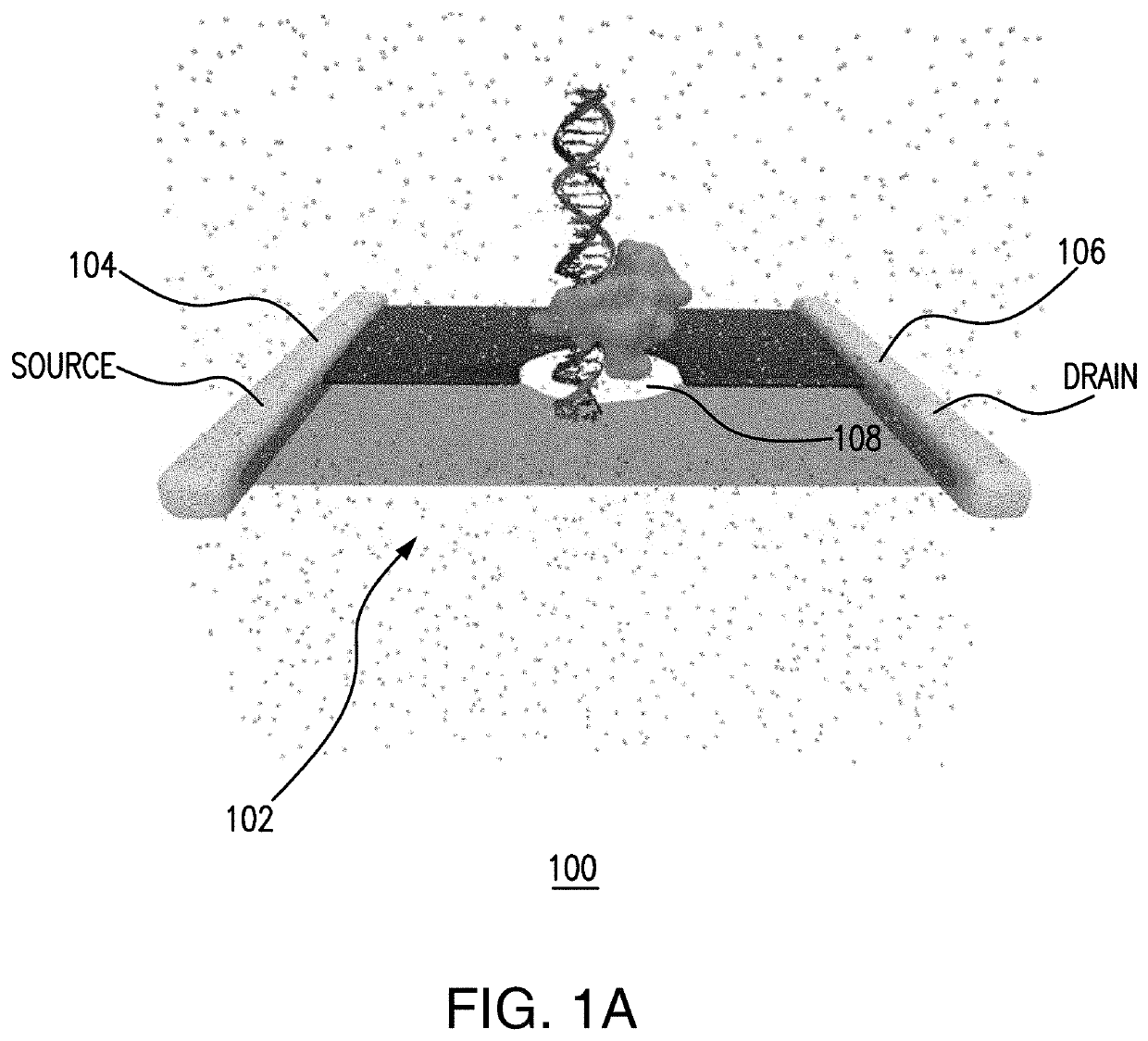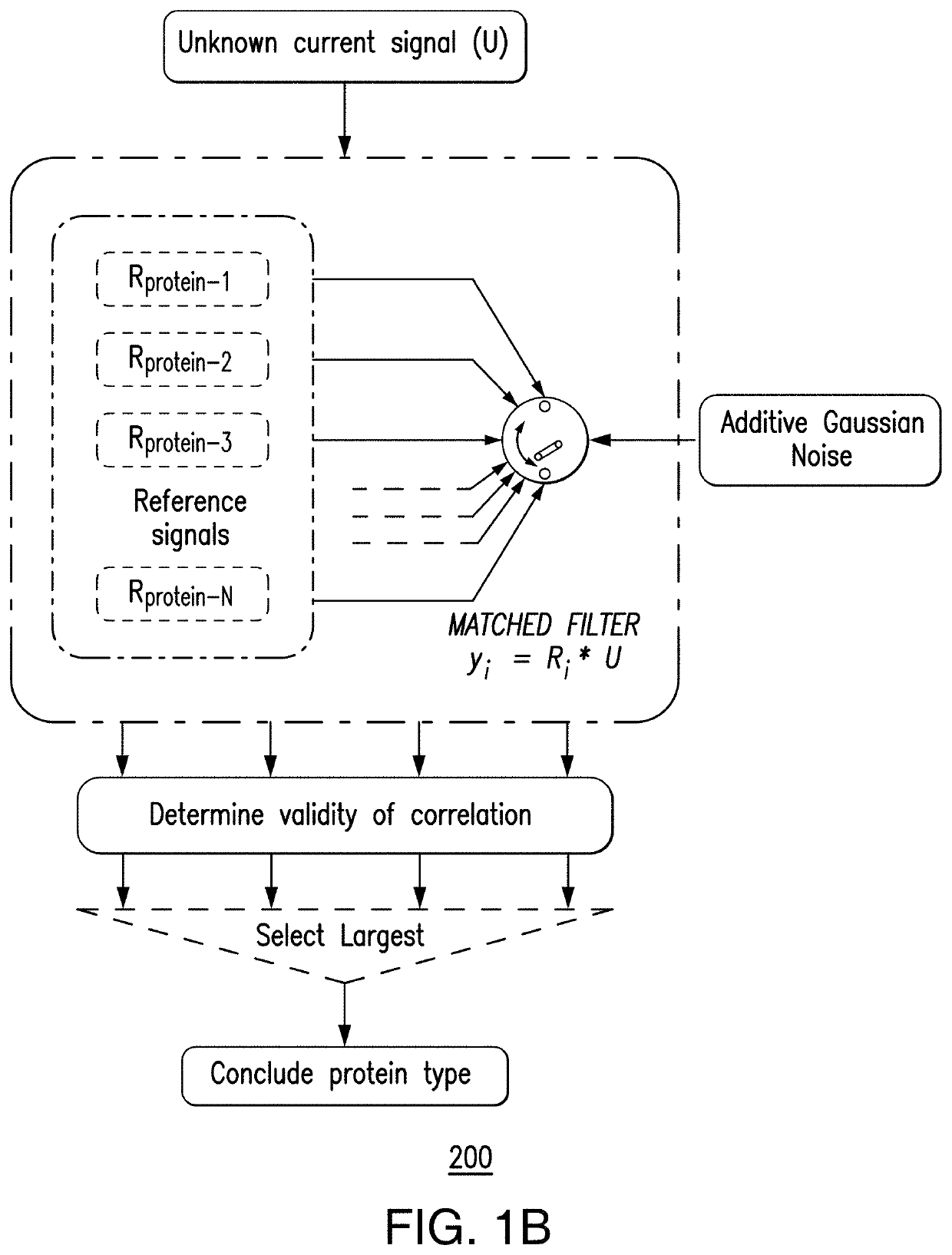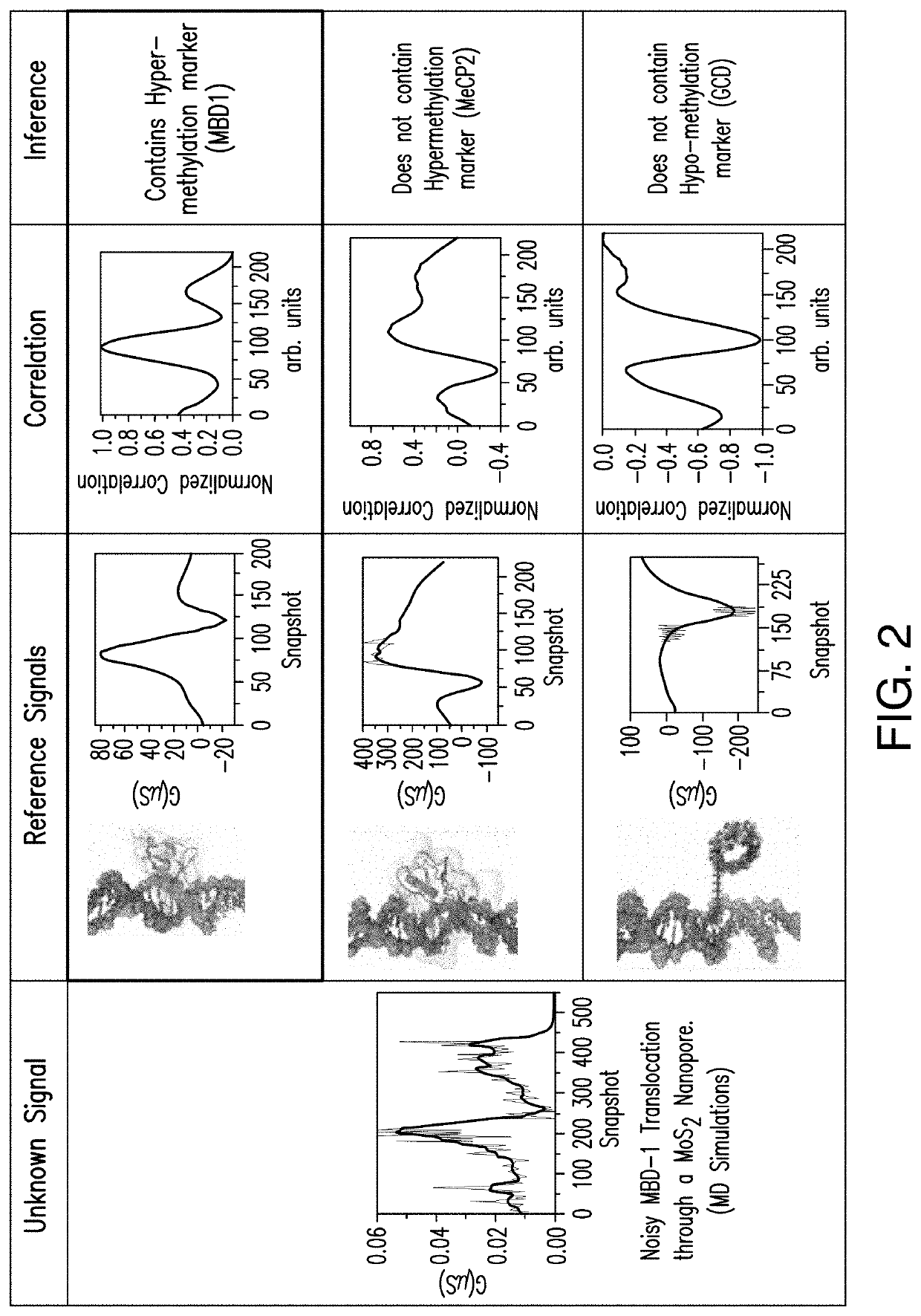Classification of epigenetic biomarkers and/or DNA conformational superstructures via use of atomically thin nanopores
a technology of conformational superstructure and epigenetic biomarkers, which is applied in the field of epigenetic biomarkers and/or to the classification of dna conformational superstructures, can solve the problems of inability to meet certain conventional biochemical sequencing processes, low cost, and fast and reliable methods
- Summary
- Abstract
- Description
- Claims
- Application Information
AI Technical Summary
Benefits of technology
Problems solved by technology
Method used
Image
Examples
Embodiment Construction
[0019]In various embodiments, the electronic properties of 2D solid-state nanopore materials can be used to provide a versatile and generally applicable biosensor technology. The biosensor technology can be facilitated via use of a combination of molecular dynamics, nanoscale device simulations, and statistical signal processing algorithms.
[0020]As described herein, a case study is directed to the classification of three epigenetic biomarkers (methyl-CpG binding domain 1 (MBD-1), MeCP2, and γ-cyclodextrin) attached to double-stranded DNA to identify regions of hyper-methylations and / or hypo-methylations by utilizing a matched filter. Assessed is the sensing ability of the nanopore device to identify the biomarkers based on their characteristic electronic current signatures. Such a matched filter-based classifier can enable real-time identification of the biomarkers that can be implemented on chip. In various embodiments, this integration of a sensor with signal processing architectu...
PUM
| Property | Measurement | Unit |
|---|---|---|
| ionic current | aaaaa | aaaaa |
| diameter | aaaaa | aaaaa |
| pore diameter | aaaaa | aaaaa |
Abstract
Description
Claims
Application Information
 Login to View More
Login to View More - R&D
- Intellectual Property
- Life Sciences
- Materials
- Tech Scout
- Unparalleled Data Quality
- Higher Quality Content
- 60% Fewer Hallucinations
Browse by: Latest US Patents, China's latest patents, Technical Efficacy Thesaurus, Application Domain, Technology Topic, Popular Technical Reports.
© 2025 PatSnap. All rights reserved.Legal|Privacy policy|Modern Slavery Act Transparency Statement|Sitemap|About US| Contact US: help@patsnap.com



